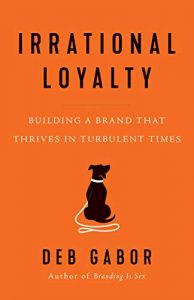Down the Rabbit Hole: A Look at Alice in Wonderland
Do you like Alice in Wonderland? Maybe you’ve read the book, or you’re mostly familiar with it from the Disney animated feature. It’s had plenty of influence on childhoods and society since its initial publication in 1865, perhaps providing a nice escape from some of the world events going on at the time.
Alice in Wonderland: The Book
“Alice in Wonderland,” written by Lewis Carroll, is a captivating and surreal tale that follows the adventures of a young girl named Alice. The story begins when Alice, feeling bored and drowsy while sitting beside her sister, spots a white rabbit wearing a waistcoat and carrying a pocket watch. Intrigued, she follows the rabbit down a rabbit hole and falls into a bizarre world known as Wonderland.

In Wonderland, Alice encounters a series of peculiar and fantastical characters, each more eccentric than the last. These include the grinning Cheshire Cat, who can disappear at will; the Mad Hatter and the March Hare, who are perpetually stuck at tea-time; and the tyrannical Queen of Hearts, who rules the land with a whimsical and ruthless disposition, frequently ordering beheadings over trivial matters.
Throughout the story, Alice finds herself in a variety of strange situations that challenge her understanding of the world. She undergoes several transformations in size, thanks to various magical potions and cakes, which further complicates her adventure. Each encounter is marked by riddles, nonsensical poetry, and philosophical musings, reflecting Carroll’s playful manipulation of logic and language.
The narrative is episodic and dreamlike, with Alice moving from one bizarre scenario to another without a clear plot progression. This structure reflects the whimsical and often illogical world that Carroll creates. Themes of identity and reality are explored as Alice questions who she is in this strange world and contemplates the very nature of reality.
The book concludes with a climactic trial in which Alice, who has grown to her full size and confidence, stands up to the Queen of Hearts and challenges the nonsensical proceedings. The creatures of Wonderland turn on her, and she suddenly wakes up on the riverbank next to her sister, realizing that her adventures in Wonderland were all a vivid dream. Alice leaves her sister to ponder her dream, returning home for tea, with a mind forever changed by her curious journey.
Themes of Alice in Wonderland
“Alice in Wonderland” by Lewis Carroll is rich in themes that delve into the complexities of growth, identity, and the nature of reality. One prominent theme is the challenge of navigating adolescence. Alice’s constant changes in size metaphorically reflect the physical and psychological shifts experienced during growth. Her fluctuations in height cause confusion and distress, mirroring the often tumultuous process of growing up where one struggles with their sense of self and their place in the world.
The theme of absurdity and the challenge of logic is another significant aspect of the narrative. Wonderland operates on its own set of rules, which often defy the conventional logic familiar to Alice and the reader. This nonsensical world challenges the rigidity of Victorian norms and the structured, rule-bound society of Carroll’s time. The characters Alice meets frequently engage in confusing dialogues and paradoxical situations that test her ability to reason and understand, illustrating the limits and sometimes the absurdity of overly rigid logic.
Identity is a crucial theme explored through Alice’s constant questioning of herself and her environment. “Who in the world am I?” becomes a key question for Alice as she navigates the fluid and often contradictory identities of Wonderland’s inhabitants. This exploration reflects the existential ponderings about one’s place in the world, a universal question that resonates deeply with readers.
Authority and rebellion are also central themes, embodied by the Queen of Hearts and her arbitrary and tyrannical rule over Wonderland. Her frequent cries of “Off with their heads!” highlight the absurdity and brutality of power unchecked. Alice’s interactions with the Queen and other characters often reflect a subtle critique of authoritarian governance and the importance of questioning and, when necessary, defying authority.
Wonderland exists perhaps solely in Alice’s imagination, serving as a vivid counterpoint to her mundane reality. The boundary between the real and the imagined blurs, inviting readers to reflect on the power and limits of imagination. This theme celebrates the imaginative mind while also questioning the implications of a reality construed through such a lens, suggesting that our grasp of what is real is both tenuous and subjective.
Alice in Wonderland’s Influence on Art and Language
“Alice in Wonderland” by Lewis Carroll has left an indelible mark on society since its publication in 1865, influencing various aspects of culture, art, language, and philosophy.
Firstly, the impact on literature and popular culture is profound. Carroll’s innovative use of nonsensical language, playful absurdity, and surreal characters has inspired countless authors and artists to explore similar themes and techniques in their works. “Alice in Wonderland” has spawned a myriad of adaptations across different media including theater, film, and television, each bringing its own interpretation to the whimsical world of Wonderland. This constant reimagining across generations attests to the story’s universal appeal and its capacity to inspire creativity.
In the realm of psychology and philosophy, “Alice in Wonderland” has introduced concepts that challenge traditional perceptions of reality and identity. The story’s dream-like sequences and illogical events have been used to discuss topics such as dream theory, perception, personal identity, and the subconscious. The term “Alice in Wonderland Syndrome,” a condition involving perceptual distortions, was directly inspired by Alice’s experiences of changing sizes and shapes, demonstrating the book’s influence in scientific fields.
The language of “Alice in Wonderland” has also infiltrated everyday speech. Phrases like “down the rabbit hole” and “mad as a hatter” have become common idioms, used to describe situations that are bizarre, confusing, or deeply intricate. This infiltration of Carroll’s inventive language into common vernacular shows how deeply the narrative has embedded itself in cultural consciousness, serving as shorthand for experiences that defy straightforward explanation.
Artistically, “Alice in Wonderland” has been a muse for countless artists, illustrators, and designers. Its vivid imagery and fantastical scenes have been reimagined in countless forms, from Salvador Dali’s surreal paintings to contemporary fashion lines. This continual artistic engagement not only keeps the story relevant but also allows each generation to interpret its symbols and themes through their own cultural and historical lenses.
Finally, the political and social implications of Carroll’s work have prompted both scholarly and casual debate. The absurdity and illogic of Wonderland have been interpreted as critiques of Victorian society, authority, and governance, inspiring discussions about societal norms and the role of authority. In this way, “Alice in Wonderland” serves not just as a source of entertainment but as a platform for critical reflection and discourse on societal structures.
Differences Between the Book and Disney Animated Feature
The differences between Lewis Carroll’s “Alice in Wonderland” and the Disney animated adaptation are numerous, reflecting both the distinct narrative style of the original text and the cinematic needs of a family-friendly film.

Firstly, the structure and tone of the story show significant differences. Carroll’s book is episodic and surreal, with a strong emphasis on absurd logic and complex wordplay. The narrative flow in the book is disjointed, mimicking the logic of a dream. In contrast, Disney’s version strives for a more coherent plot, streamlining many of the book’s events and reducing its more complex dialogues to ensure it appeals to a younger audience. This adaptation softens the more bizarre elements to create a whimsically adventurous tone rather than a puzzling one.
Character portrayal and development also differ between the two versions. In the book, characters like the Cheshire Cat, the Mad Hatter, and the Queen of Hearts are enigmatic and often unsettling. Their interactions with Alice can be perplexing and even slightly menacing. The Disney adaptation, while maintaining the eccentricities of these characters, makes them more charming and less intimidating. The Cheshire Cat, for instance, while still cryptic, appears more friendly and helpful in the film.
The role of certain characters is also expanded or diminished in the film. For example, the Disney version introduces some characters like the Doorknob, who does not exist in the book. This addition serves as a guide for Alice as she navigates Wonderland. Conversely, characters like the Duchess, who plays a significant role in the book, are entirely omitted from the film. Such changes were likely made to streamline the story and focus on characters that would visually or thematically appeal more to film audiences.
Themes and messages present another area of divergence. Carroll’s book delves into the absurdity of the world and critiques elements of Victorian society, including the education system and the judiciary. It raises philosophical questions about identity, reality, and authority. Disney’s adaptation focuses less on these satirical elements and more on the adventure and the moral lessons of the story. It emphasizes themes like curiosity, bravery, and the importance of perseverance.
Lastly, the ending of the story in both mediums underscores their different takes on the material. Carroll’s book ends with Alice waking up from her dream, reflecting on the bizarre and somewhat unsettling experiences she had. The Disney movie, while also concluding with Alice waking up, presents a more resolved and cheerful conclusion, emphasizing the joy and wonder of her adventures rather than the perplexity and chaos of them in the book. This difference highlights Disney’s aim to leave its audience with a sense of uplifting closure.
…Wasn’t there a Tim Burton version too?
You remembered that one correctly!
The differences between Lewis Carroll’s “Alice in Wonderland” and Tim Burton’s cinematic adaptation are quite pronounced, reflecting Burton’s unique visual style and a narrative approach that significantly diverges from the original text.

One major difference is the plot structure and character development. While Carroll’s book is primarily a whimsical and nonsensical journey with no clear narrative arc, Burton’s film introduces a more traditional storyline with a defined conflict and resolution. In the film, Alice is not a young girl but a 19-year-old who returns to Wonderland (referred to as “Underland”) to fulfill a prophecy and overthrow the tyrannical Red Queen. This plot is a significant departure from the book’s series of loosely connected, bizarre events that serve more as a showcase of Carroll’s wit and love for wordplay than a cohesive narrative.
The portrayal of Wonderland itself also differs substantially. Carroll’s Wonderland is a dream-like realm where logic is turned on its head, and the absurd is the norm. Burton’s Underland, on the other hand, is darker and more foreboding, filled with Gothic elements that are characteristic of his filmmaking style. This Underland is a place suffering under the rule of the Red Queen, depicted with a sense of decay and oppression—a sharp contrast to the more neutral, albeit bizarre, landscape of the book.
Character portrayals in Burton’s film offer a reinterpretation of Carroll’s original creations. For instance, characters like the Mad Hatter, played by Johnny Depp, are given much more backstory and emotional depth. The Hatter is not just a mad tea party host but a character with a poignant history and a vital role in Underland’s politics. Similarly, the Red Queen, merging elements from the Queen of Hearts and the Red Queen from “Through the Looking-Glass,” is portrayed with more complexity and vulnerability, making her a more sympathetic character despite her tyranny.
Themes and messages in Burton’s adaptation also reflect a shift from the original. While Carroll’s work delves into the absurdity of the world and the fluidity of identity and reality, Burton’s film focuses more on themes of destiny, self-discovery, and rebellion against tyranny. Alice’s journey in the film is about coming into her own, realizing her strength, and deciding her fate, which aligns more with contemporary narratives of heroism and self-actualization than Carroll’s more Victorian-era reflections on social norms and personal identity.
Finally, the visual style and special effects used in Burton’s film transform the story into a visual spectacle that is very different from the quaint, black-and-white illustrations by John Tenniel that accompanied the original text. Burton’s use of CGI and 3D technology brings Underland to life in a vivid and detailed manner that is both enchanting and unsettling, creating a visually immersive experience that starkly contrasts with the simpler, more imaginative landscape readers create in their minds when engaging with Carroll’s prose. This visual reimagining helps set the film apart as a modern reinterpretation of the classic tale.








